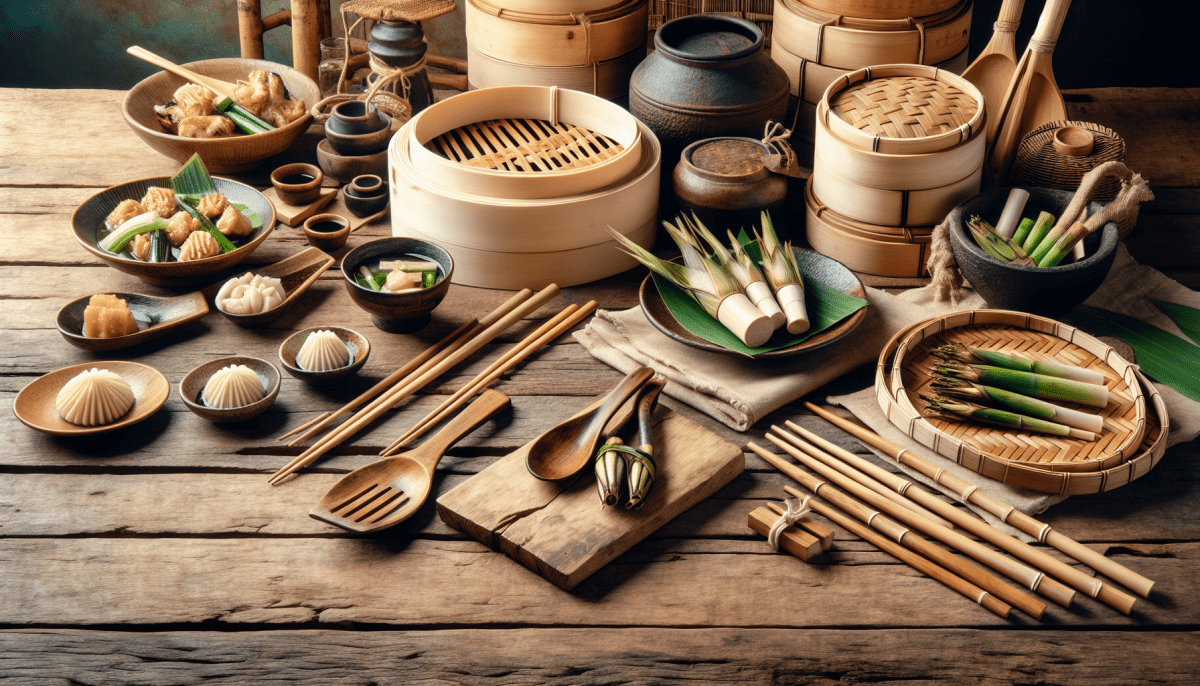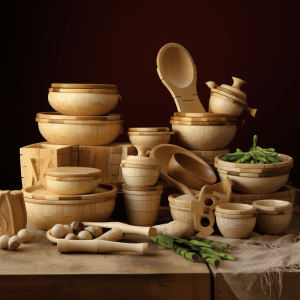Bamboo has been an integral part of human civilization for centuries, serving various purposes and playing a crucial role in culinary traditions around the world. From its early uses in ancient crafts to its modern applications in gastronomy, bamboo has fascinated and nourished people throughout history.
In ancient times, bamboo was valued for its flexibility and strength, making it an ideal material for crafting tools, utensils, and even weapons. The lightweight yet sturdy nature of bamboo made it a valuable resource for constructing baskets, fishing traps, and cooking vessels. Moreover, its natural abundance and quick growth cycle made bamboo readily available to many cultures, making it an essential component of their daily lives.
As civilization advanced, so did the uses of bamboo in culinary practices. Many Asian cultures, such as Chinese, Japanese, and Thai, have long recognized the potential of bamboo as a versatile ingredient in their cuisine. From bamboo shoots used in stir-fries and curries to bamboo leaves used for steam cooking, this remarkable plant adds a unique texture and flavor to dishes. Additionally, the hollow stems of certain bamboo species have been employed as natural cooking vessels, imparting a subtle earthy taste to foods cooked inside them.
From ancient crafts to modern gastronomy, bamboo's journey has been one of continuous adaptation and innovation. Today, chefs and food enthusiasts worldwide are rediscovering the culinary potential of this incredible plant. Its sustainable growth and eco-friendly characteristics have made bamboo a popular choice for sustainable kitchenware, cutting boards, and even edible utensils. As we embrace the rich history and culinary heritage associated with bamboo, we are also paving the way for a more sustainable and environmentally conscious gastronomic future.
Bamboo: A Versatile Ingredient in Culinary Traditions
Bamboo, one of nature's most versatile plants, has played an essential role in culinary traditions around the world for centuries. Not only is bamboo abundant and sustainable, but its unique characteristics make it a prized ingredient for a wide range of dishes. From Asia to Africa, bamboo has become an integral part of various cuisines, offering a multitude of flavors, textures, and creative uses.
In Asian cuisine, particularly in countries such as China, Japan, and Vietnam, bamboo is revered for its crunchy texture and delicate flavor. The young shoots of the bamboo plant are harvested and used in a myriad of dishes, from stir-fries to soups and even pickles. Known for its ability to absorb other flavors, bamboo shoots are frequently used as a vegetable to provide a subtle and distinct taste. Their crisp and slightly fibrous texture adds depth to dishes and complements the overall presentation.
Beyond Asia, bamboo's culinary uses extend to diverse parts of the world. In Africa, for instance, bamboo leaves are often used to wrap food before grilling or steaming, infusing the dish with a unique aroma. In addition, bamboo leaves are sometimes boiled to make a flavorful herbal tea that is believed to have various medicinal benefits. This demonstrates the versatility of bamboo, transcending cultural boundaries and leaving its mark on culinary rituals globally.
Moreover, bamboo is not limited to savory dishes alone; it also finds its way into desserts and beverages. In Southeast Asia, bamboo canes are used to extract a sweet, refreshing syrup that can be incorporated into desserts, cocktails, or simply enjoyed as a beverage. Its subtle sweetness adds a pleasant note to treats like ice cream, cakes, and even rice-based desserts.
Unleashing Bamboo's Flavorful Potential: Culinary Innovations
Throughout history, bamboo has been widely recognized and utilized for its versatility in various industries. From construction to paper production, this remarkable plant has proven to be indispensable. However, its potential in the culinary world has long been overlooked. With its mild flavor and unique texture, bamboo presents a world of untapped possibilities for creative chefs seeking to push the boundaries of taste.
One of the most exciting culinary innovations involving bamboo is its use as a cooking vessel. Bamboo steamers have been employed in traditional Asian cuisine for centuries, allowing delicate flavors to infuse into dishes while preserving their natural nutrients. Whether it's steaming dumplings, fish, or vegetables, bamboo imparts a subtle earthy taste that enhances the overall dining experience.
Moreover, bamboo shoots, a staple ingredient in many Asian cuisines, have gained popularity among food enthusiasts and health-conscious individuals alike. These tender and crisp sprouts possess a slightly nutty flavor that adds depth to stir-fries, salads, and soups. Additionally, bamboo shoots are packed with essential nutrients and offer numerous health benefits, making them an excellent addition to any well-balanced diet.
Beyond the Plate: Bamboo's Cultural and Historical Significance
While bamboo has gained popularity in recent years as a sustainable and versatile material, its cultural and historical significance goes far beyond its uses in the culinary world. Throughout history, bamboo has played a crucial role in various cultures, serving as a symbol of strength, flexibility, and resilience.
In many Asian countries, including China, Japan, and India, bamboo holds great cultural significance. It has been used to create various traditional handicrafts, including baskets, furniture, tea sets, and musical instruments. The bamboo plant is revered for its ability to bend in the wind without breaking, representing the virtue of humility and adaptability. It is also associated with longevity and good fortune.
Furthermore, bamboo has been an integral part of architecture and construction in several regions. In parts of Southeast Asia, bamboo has been traditionally used as a building material to create sturdy and earthquake-resistant houses, temples, and bridges. The flexibility and strength of bamboo make it an ideal choice for structures in earthquake-prone areas.
Aside from cultural significance, bamboo also holds historical importance in various industries. In ancient China, bamboo was used to create the world's first paper. The inner fibers of the bamboo stalk were pulped and flattened to produce a material that became widely used for writing, printing, and bookmaking.
4.38 out of 5 starsBamboo Cookware
Sustainable and Stylish Cookware to Elevate Your Kitchen Experience
Product information
Product Review Score
Product links



